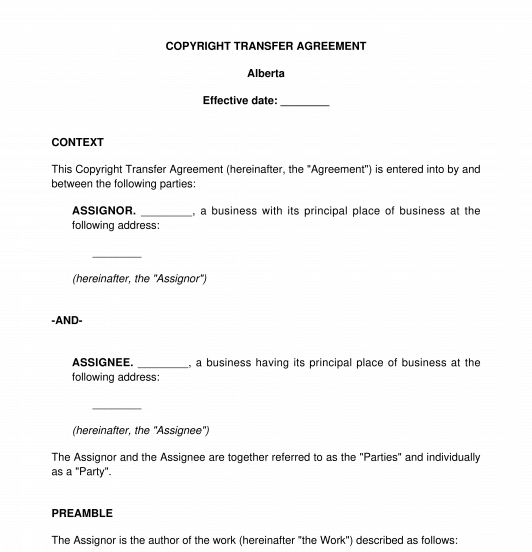 15/09/2025
15/09/2025

Answer a few questions and your document is created automatically.

Your document is ready! You will receive it in Word and PDF formats. You will be able to modify it.

 15/09/2025
15/09/2025
 Word and PDF
Word and PDF
 5 to 6 pages
5 to 6 pages
The Copyright Transfer Agreement allows the creator of a work (graphic, musical, literary creation...) to transfer the exploitation rights of his creation to a buyer.
Note: in the Agreement, the author is designated as the "assignor" and the buyer of the rights as the "assignee".
The Agreement must specify the modes of exploitation of the work envisaged, i.e. the media on which the work may be reproduced (paper, digital, etc.) and the methods of distribution of the content that may be used (press, internet, television broadcasting, etc.). The transfer can be total and authorize all the modes of exploitation, or it can be only partial and be limited to certain precise methods of exploitation.
The transfer must also specify the extended duration, geographical perimeter, and destination of the exploitation.
Attention: this Agreement is not adapted for publishing (literary or musical) or audiovisual production.
The transfer of the rights can be carried out on a purely free basis or in return for the remuneration of the author. In the case of remuneration, it is in principle proportional to the revenue derived from the sale or exploitation of the work.
In exceptional cases, a fixed payment can be agreed upon for the use of work when:
The Agreement must be initialed (initials on each page) and signed by the assignor and the assignee. Each of them keeps an original copy.
Copyright Act (R.S.C., 1985, c. C-42) is the law in Canada that governs all copyright rules.
You fill out a form. The document is created before your eyes as you respond to the questions.
At the end, you receive it in Word and PDF formats. You can modify it and reuse it.
Copyright Transfer Agreement - Template - Word and PDF
Country: Canada (English)